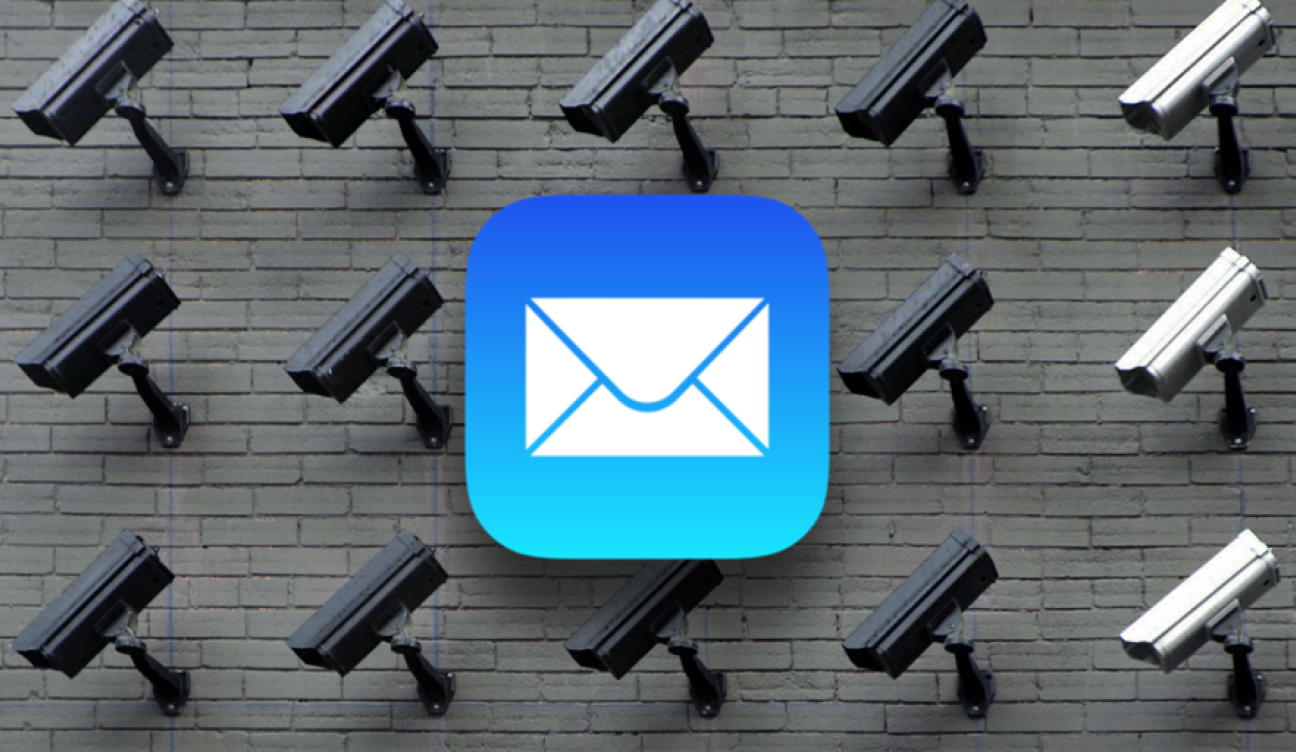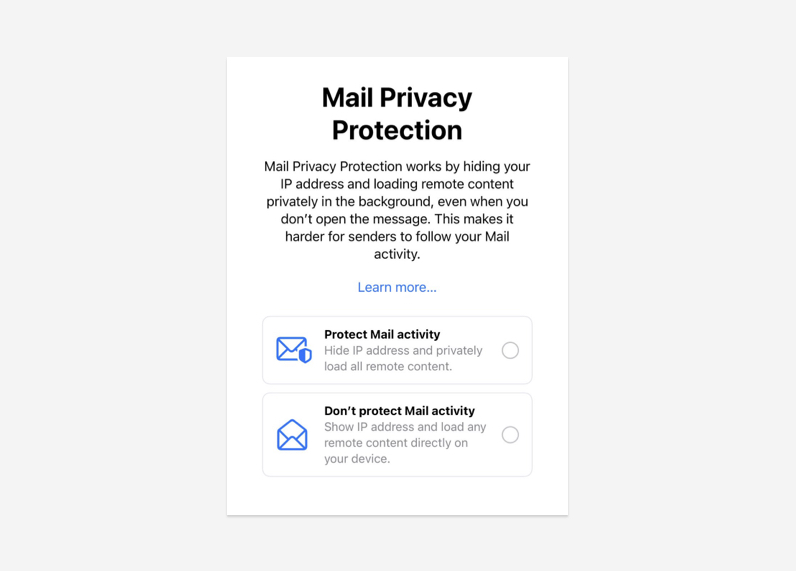Prepare Your Email Strategy for Apple's New Privacy Policy

Privacy protection is a growing concern in just about every industry, but especially in marketing. From the General Data Protection Regulation ( GDPR ) and the California Consumer Privacy Act ( CCPA ), to the elimination of third-party cookies and implementation of new email regulations, it is integral that marketers understand how these new rules affect marketing campaign data.
At the Worldwide Developers Conference in June 2021, Apple announced Mail Privacy Protection for their Mail app on Apple devices.
What is Apple’s Mail Privacy Protection Policy
According to Apple, the new policy “stops senders from using invisible pixels to collect information about the user. The new feature helps users prevent senders from knowing when they open an email and masks their IP address so it can’t be linked to other online activity or used to determine their location.
When Will This Take Effect and How Will it Be Implemented?
Once the new opt-in policy takes effect between September and November 2021, Apple Mail app users will be prompted with a message asking them to choose either to Protect Mail Activity or Don’t Protect Mail Activity. Based on Apple’s low opt - in rates to allow advertising app tracking which, as of May, are at 15% globally and 6% in the U.S., a good assumption is that most people are going to choose to be protected.
It is important to note that this policy only affects users of Apple’s Mail app. If a user has their Gmail or Outlook accounts synced into the Apple Mail app, they will be affected. Users of the Gmail app or Outlook app on their Apple devices will not be affected by the new policy to the best of our knowledge.

Source: Ryan Jones
What Does This Mean?
There are three key areas the new policy covers:
- IP tracking
- Location tracking
- Email read receipts
According to Litmus, after a user selects Protect Mail Activity, "Apple will first route emails through a proxy server to preload message content—including tracking pixels—before serving to readers. Even if readers don’t actually open those emails."
For marketers, IP tracking and location tracking will mainly impact open personalization. For instance, if email content depends on location-specific data (ex. Weather, Local Stores), that may no longer be accurate. Additionally, any email analytics based on location data will no longer be reliable.
Email read receipts are also going to have an impact, but the full effect is still unclear. Many marketers use open rates to determine a variety of subscriber engagements and marketing actions. With the new policy, open rates will also be unreliable because a user could open the Apple Mail app, but not open an email, and that could count as an open. Then they could open that email on a desktop and that is counted as an open, resulting in a subscriber being counted twice.
What Should Marketers Do?
While this may seem like a lot is changing, there are plenty of actions you and your team can take now to help prepare for the new policy implementation. And if more email service providers start to implement similar policies, you will already be in a good place to tackle any future changes.
Create a reliable open audience
Create an audience of all non-Apple Mail users by using device identification analytics. Use this audience to test and determine current open rates to have a reliable comparison for the future.
Get a baseline
Gather statistics on how your emails perform so you understand what works now - before the policy takes place.
- What portion of your user base uses specific email clients (Apple Mail, Gmail, etc.)?
- What emails have the best open rates?
- What emails work best for each list?
- Create lists based on the location data that you have now.
- What is the best time to send emails?
Test
If you don’t know what subject lines work best for your audience, now is the time to do A/B testing.
Review your email system
Before you can offset the changes to open rates with new strategies, you must first know where those dependencies are in your current system. Here is a list of dependencies to check:
- Subscriber engagement
- Industry benchmarks
- Triggers in workflows
- Retarget non-openers
- A/B test winners
- Build lists and segments
- Suppress unengaged subscribers
- Campaign success
- Optimize send times
- Location-based content
- Real-time inventory updates
- Deliverability statistics
- Inbox placement
- Emails opened in last x days
- Countdown timers
Re-engagement and re-confirmation campaigns
Ensure subscribers are receiving emails and content they want, at the frequency they prefer, by promoting preference center updates and using re-engagement and re-confirmation campaigns. Also, these will be integral moving forward, so as a best practice, run these campaigns at least twice a year or quarterly. You can even make preferences more accessible by including them in other content such as a newsletter. The more people can personalize how they want to be communicated with, the better their engagement.
List hygiene and list creation
Based on the above recommendations, list hygiene, creating lists, and segmentation will continue to be important as you will no longer be able to rely on open rates as a sign of deliverability problems.
- Remove unengaged subscribers
- Remove hard bounces
- Create an Apple Mail user list
- Create lists based on current location data
- Clean up sender reputation (make sure you aren’t blacklisted)
- Get whitelisted
Expand engagement metrics
To offset the limitations of the Apple policy, utilizing additional data points and strategies will be key.
- Replace email open rates with click rates
- Pay closer attention to unsubscribes or spam complaints
- Take a more holistic subscriber view – where can you pull in other data or systems to help understand full subscriber engagement?
- App engagement
- Mobile push notification engagement
- SMS engagement
- Website visits
- Portal or account logins
- Offline purchases
Continued Evolution of Email Marketing
As with GDPR and CCPA, email marketers continue to evolve and innovate to provide personalized experiences to subscribers. While Apple’s Mail Privacy Protection policy will have some effect, it is not the downfall of email as we know it. Remember, email open rates are not the only stat marketers have in their toolbox. Using the strategies outlined above, you and your team can evolve and continue to win the inbox.
Sources
- https://www.litmus.com/blog/5-things-you-must-know-about-email-consent-under-gdpr/
- https://www.litmus.com/blog/ccpa-what-marketers-need-to-know-about-the-california-consumer-privacy-act/
- https://developer.apple.com/videos/play/wwdc2021/10085/?time=744
- https://www.flurry.com/blog/ios-14-5-opt-in-rate-att-restricted-app-tracking-transparency-worldwide-us-daily-latest-update/
- https://www.litmus.com/blog/apple-mail-privacy-protection-for-marketers/
About The Author:
Sagepath Reply, Digital Experience Agency | Sagepath Reply
Sagepath Reply is a full-service agency specializing in digital experience design and development, digital marketing, digital transformation and analytics.

Let’s Start a Conversation
Reach out to discuss your digital transformation needs and see how we can help. We would love to start a long-term partnership with your company.
Get in Touch


